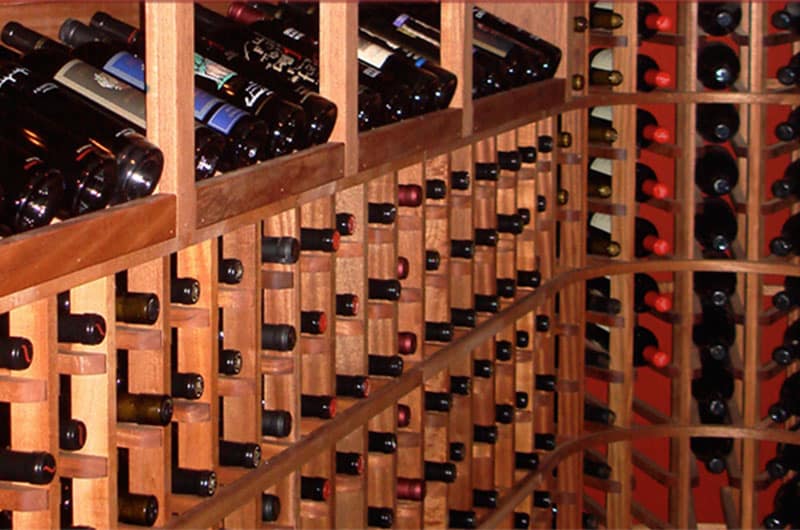~ by Jenny Benzie, Advanced Sommelier + Certified Wine Educator, Proprietress of Épernay Wine & Spirits ~
Your ‘Castle in the Sand’ on Nantucket is finally renovated after many months of patience and last minute fire drills to meet your deadline. As if you weren’t stressed enough about getting the final decorating touches in place before guests arrive to our magical island, you wanted to make sure that your state-of-the-art, show piece of a wine cellar was also stocked for your drinking pleasure, and also to impress the dignitaries you will soon be hosting.
The amount of time, effort and dollars spent on a wine collection, no matter how big or small, is an investment that needs to be well protected like any other asset. In honor of National Preservation Month with the Nantucket Preservation Trust, here is a smart reference list of important things you need to know for preservation of your wine investment.
Location, Location, Location You made sure to follow this rule with your real estate acquisition and should do the same with any wine purchases. Think of your wine collection as a buried treasure here on island just waiting to be discovered. Rule of thumb is that wine should be kept in the darkest, coolest corner with little to no vibration. This means do not store your wine treasures in a picturesque wrought iron wine rack in direct sun light. Not only will this ray of sunshine make the temperature of your wine fluctuate throughout the day, which is detrimental to the juice inside the bottle, it will also be unsightly as the bottles quickly attract any particles of dust in close proximity.
While many home chefs cook with wine (and sometimes even add it to the food), it is best to avoid the concept of easy wine access and never store wine in your kitchen. Again, the irregular rise and fall in temperature while you are baking Nantucket Bay scallops or sautéing Bartlett Farm vegetables is not recommended. Never store your wine on top of the fridge – not only does heat rise in the kitchen, the vibration of the compressor will shake the wine causing it to lose its flavors and aromas.
Keep It Cool
Your wine collection should be stored and remain at a constant, steady temperature in order for it to mature properly and not suffer from premature development. The range of acceptable temperatures for a wine cellar is dependent on the types of wines that you keep. If your wine is intended for long-term aging, you could set your gauge as low as 55 degrees F (13 degrees C). Most wine cellars are in the range of 58-62 degrees F. High quality white wines, such as white Burgundies and Champagnes, should be kept at the lower end of the temperature spectrum, while big hearty reds such as Cabernet Sauvignon and Syrah could be stored between 64-68 degrees F. Lighter styles reds like Pinot Noir, Barolo and Chianti would fall in between this span. All wine should definitely be stored at less than 70 degrees F without any negative effect over a long period of time. A variety of wine coolers now have dual temperature zones that have two temperature compartments that make it ideal for storing both white and red wines.
Don’t Rock the Baby (Bottle)
Wine should be stored on its side, laid down in a horizontal position. This enables the wine to remain in contact with the cork to keep it moist. When the wine cork is moist, it will expand (as anything soaked in liquid will do) in order to fill the neck of the bottle. If the cork were to dry out, it could shrink or crumble which would allow the wine to seep out of the top. If wine can exit the bottle, then air (made of oxygen) could get into the bottle leading to oxidation. This effect would age your wine rapidly to a point of no return. Make sure that the wine label is facing up so that you are able to read what it is at a quick glance. Once your wine is in place, it is best not to disturb it by twisting and turning it to see what you have in there.
Tag It
Labeling each of the bottle necks with a wine tag will be extremely helpful as you make your best attempt to keep track of your wines. This will allow you to view your sleeping beauties without shaking the bottle or its contents every time you want to see what is in your collection. While there are numerous online cellar management programs that can help you to catalogue (and assess the estimated value of your wine, which could be an advantage for insurance purposes), sometimes a good ol’ Excel spreadsheet or even a hand-written grid kept close by is helpful to jog your memory of what you have remaining (or advise you as to what your kids drank last time they used the house).
Cheers Worthy
If you happen to buy a case of one particular wine, or even several bottles of the same selection and want to know where the wine is in its course of development, experiment by sampling a bottle to see how it has evolved in your cellar conditions. Log your wine notes each time you do this to know if you think you should be drinking some of your wines sooner (based on your taste preference) or hold on to them longer for a maximum enjoyment at a later time. While it is common to hold on to that one special bottle for the most momentous of occasions, this practice leads more to the wine being aged for too long and disappointment rather than pleasure. Every day is a special day and should be celebrated with a wine that will make it memorable and enjoyable for you on any occasion.



